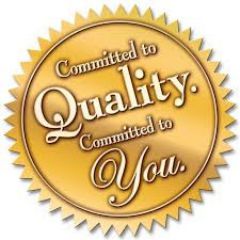ACC202 Final Project Part I & Part II Guidelines and Rubric || Complete Solution
ACC 202 Final Project Part I Guidelines and Rubric
Overview
To be successful, all businesses must perform periodic assessments to determine the efficiency of operations. Whether you are an owner, a manager, or a front-
line employee, at some time you will be affected by a budget.
Preparing a budget and analyzing the results of operations in relation to the budget will help you understand how to use financial information to evaluate the effectiveness of an organization’s operations. The process will also help you determine the reasons operations do not always go as planned and make decisions on changes that might need to be made to make the organization, or just your own department, more efficient.
In the Budget Workbook, you will use course-provided information to 1) prepare an operating budget, 2) compare actual operational results to the budgets to determine financial strengths and weaknesses, and 3) make decisions about operational changes that need to be made.
To do this, you will prepare an operating budget at the beginning for your company. Your budget will include different products with different costing methods, labor, overhead, and sales projections based on a desired profit margin. You will compare your budget to actual results to determine and analyze variances. This variance analysis will allow you to make decisions about changes that should be made to make your organization more efficient.
This assessment addresses the following course outcomes:
·
ACC-202-01:
Communicate budget planning to internal stakeholders for strategic planning
·
ACC-202-02:
Apply costing methods to production for supporting budget planning and decision making
Prompt
You are a manager for Peyton Approved, a pet supplies manufacturer. This responsibility requires you to create budgets, make pricing decisions, and analyze the
results of operations to determine if changes need to be made to make the company more efficient.
You will be preparing a budget for the quarter July through September 2014. You are provided the following information. The budgeted balance sheet at June
30, 2014, is:
Sales were 20,000 units in June 2014. Forecasted sales in units are as follows: July, 19,000; August, 21,000; September, 20,000; October, 24,000. The product’s selling price is $17.50 per unit and its total product cost is $14.35 per unit.
2. The June 30 finished goods inventory is 14,700 units.
3. Going forward, company policy calls for a given month’s ending finished goods inventory to equal 70% of the next month’s expected unit sales.
4. The June 30 raw materials inventory is 4,375 units. The budgeted September 30 raw materials inventory is 1,980 units. Raw materials cost $8 per unit.
Each finished unit requires 0.50 units of raw materials. Company policy calls for a given month’s ending raw materials inventory to equal 20% of the next month’s materials requirements.
5. Each finished unit requires 0.50 hours of direct labor at a rate of $16 per hour.
6. Overhead is allocated based on direct labor hours. The predetermined variable overhead rate is $1.35 per direct labor hour. Depreciation of $20,000 per month is treated as fixed factory overhead.
7. Monthly general and administrative expenses include $12,000 administrative salaries and 0.9% monthly interest on the long-term note payable.
8. Sales representatives’ commissions are 10% of sales and are paid in the month of the sales. The sales manager’s monthly salary is $3,750 per month.
9. The company expects 30% of sales to be for cash and the remaining 70% on credit. Receivables are collected in full in the month following the sale (none are collected in the month of the sale).
10. All raw materials purchases are on credit, and no payables arise from any other transactions. One month’s raw materials purchases are fully paid in the
next month.
11. Dividends of $20,000 are to be declared and paid in August.
12. Income taxes payable at June 30 will be paid in July. Income tax expense will be assessed at 35% in the quarter and paid in October.
13. Equipment purchases of $100,000 are budgeted for the last day of September.
The minimum ending cash balance for all months is $40,000. If necessary, the company borrows enough cash using a short-term note to reach the minimum. Short-term notes require an interest payment of 1% at each month-end (before any repayment). If the ending cash balance exceeds the minimum, the excess will be applied to repaying the short-term notes payable balance.
Specifically, the following critical elements must be addressed:
1. Operating Budget
Create an operating budget
a) Prepare a sales budget. Ensure accuracy of data. [ACC-202-02]
b) Annotate your sales budget line items. Why have you made the choices you have made? What information informed your decision for each item? [ACC-202-01]
c) Prepare a production budget. Ensure the accuracy of your data. [ACC-202-02]
d) Annotate your production budget line items. Why have you made the choices you have made? What information informed your decision for each item? [ACC-202-01]
e) Prepare a manufacturing budget. Ensure the accuracy of your data. [ACC-202-02]
f) Annotate your manufacturing budget line items. Why have you made the choices you have made? What information informed your decision for
each item? [ACC-202-01]
g) Prepare a selling expense budget. Ensure the accuracy of your data. [ACC-202-02]
h) Annotate your selling expense budget line items. Why have you made the choices you have made? What information informed your decision for each item? [ACC-202-01]
i) Prepare a general and administrative expense budget using appropriate costing methods. [ACC-202-02]
j) Annotate your line items. Why have you made the choices you have made? What information informed your decision for each item? [ACC-202-
01]
2. Budget Variance Analysis
The actual quantity of material used was 31,000 with an actual cost of $7.75 per unit. The actual labor hours were 33,000 with an actual rate per hour of
$15.
a) Develop a variance analysis including a budget variance performance report and appropriate variances for materials, labor, and overhead. [ACC-
202-01]
b) Annotate each variance. What does the variance tell you? [ACC-202-01]
c) What needs to be investigated to determine the reason for the variance? Why? [ACC-202-01]
Final Project Part I Rubric
Guidelines for Submission: Complete the Final Project Part I Student Worksheet and the Budget Variance Student Worksheet. Your annotation and analysis
should be 5–7 pages, double-spaced, with one-inch margins, 12-point Times New Roman font, and APA format.
***********************************************************************************************************
ACC 202 Final Project Part II Guidelines and Rubric
Overview
To be successful, all businesses must perform periodic assessments to determine the efficiency of operations. Whether you are an owner, a manager, or a front-
line employee, at some time you will be affected by a budget.
Preparing a budget and analyzing the results of operations in relation to the budget will help you understand how to use financial information to evaluate the effectiveness of an organization’s operations. The process will also help you determine the reasons operations do not always go as planned and make decisions on changes that might need to be made to make the organization, or just your own department, more efficient.
In the budget report, you will use course-provided information to communicate the results of operations to internal parties. This assessment addresses the following course outcomes:
· Communicate budget planning to internal stakeholders for strategic planning
· Apply costing methods to production for supporting budget planning and decision making
· Analyze financial information in identifying opportunities for operational efficiencies
· Apply ethics within the accounting decision-making process for supporting responsible business activities
Prompt
You are a manager for a pet supplies manufacturer. This responsibility requires you to create budgets, make pricing decisions, and analyze the results of
operations to determine if changes need to be made to make the company more efficient.
Using the workbooks you created for Final Project Part I, you will make decisions about possible changes that should be made to make the company more efficient. You will look at the possibility of making some components of one product instead of buying them, and you will determine how to evaluate the company as a whole and managers in particular. You will create a report detailing your findings.
Specifically, the following critical elements must be addressed:
Prepare a Report
a) Discuss the initial budget process, the variances, and potential reasons for the variances.
b) Determine changes you think the company should make based on the variance analysis. What will the changes accomplish?
c) What are the ethical considerations of the changes you have selected? Why are you recommending these particular changes?
d) Decide whether you continue buying a particular component of one of your products or making the product in-house. Develop a recommendation on the “make” or “buy” decision for the given component. What factors did you consider?
e) What are the ethical considerations of your decision? What implications could this decision have?
f) Describe how your decision was reached. How will this impact the efficiencies of your operation?
g) What suggestions would you make for nonfinancial performance measures that the company should adopt? What are the pros and cons of each?
h) What are the ethical considerations of your suggestions? Explain the significance of each.
Final Project Part II Rubric
Guidelines for Submission: Your budget report should be 1–2 pages, double-spaced, with one-inch margins, 12-point Times New Roman font, and APA format.
Instructor Feedback: This activity uses an integrated rubric in Blackboard. Students can view instructor feedback in the Grade Center. For more information, review these instructions.
ACC202 Final Project Part I & Part II Guidelines and Rubric || Complete Solution
ACC 202 Final Project Part I & Part II Guidelines and Rubric ...





Kingtut
Senior JournalistSell Your Solution Report Solution Support Center
Online Users
-
 Kingtut
Today
Kingtut
Today
A+ - Thank you!
Thanks for the positive feedback!